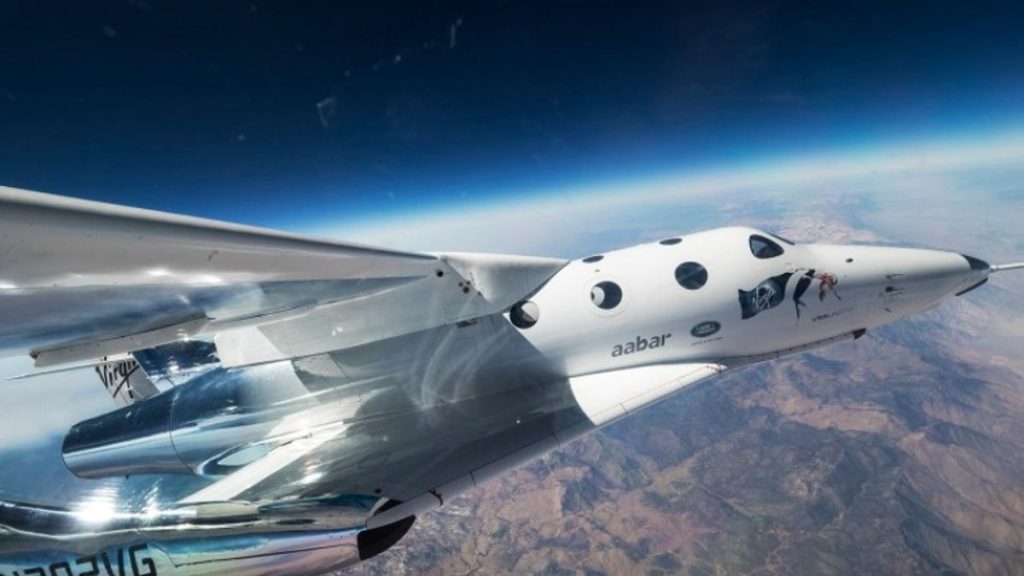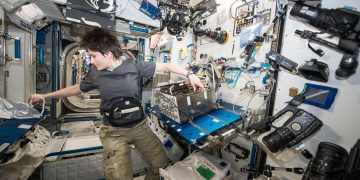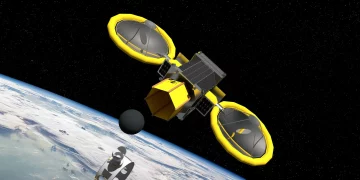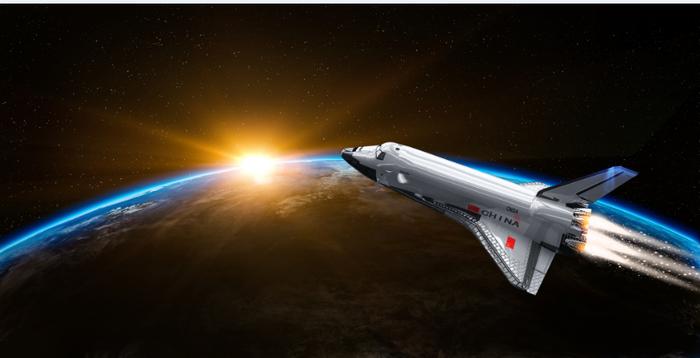Introduction: The New Frontier of Space Tourism
The idea of space travel once belonged exclusively to astronauts, governments, and the elite few with the necessary resources. However, as technology advances and private space companies such as Blue Origin, Virgin Galactic, and SpaceX take the lead, space tourism is rapidly transitioning from a science fiction fantasy to a viable commercial industry. The concept of sending private citizens into space for a few minutes of weightlessness, awe-inspiring views of Earth, and a taste of the cosmos has captured the public’s imagination.
The idea of suborbital flights—flights that reach the edge of space but do not complete an orbit around Earth—has become a central aspect of this democratization of space. These flights typically last a few minutes, providing passengers with the experience of weightlessness and an unparalleled view of the Earth from space. While these flights are exciting and represent a massive leap in the accessibility of space, they also raise important concerns about safety and risks.
As the space tourism industry expands and more companies start offering commercial spaceflights, the question arises: Are the safety risks associated with suborbital space tourism being adequately addressed? This article explores the potential safety hazards of suborbital flights, how they are being mitigated, and whether the industry’s rapid growth might be glossing over key safety considerations.
Suborbital Flights: The Thrill of Space, With Risks
Suborbital space tourism flights are designed to give passengers a brief but exciting experience of space. These flights are typically powered by rocket engines and are much shorter than orbital missions, often lasting only around 10-15 minutes. However, the fact that they reach the edge of space—generally defined as 100 kilometers (62 miles) above the Earth’s surface—places them in a realm where traditional aviation does not apply, and they present unique challenges for both passengers and companies alike.
1. The Flight Experience: What Passengers Encounter
During a suborbital flight, passengers experience the following stages:
- Launch: The spacecraft is launched vertically, propelled by rocket engines, typically by companies like Blue Origin or Virgin Galactic.
- Zero Gravity: After reaching the apex of the flight, passengers experience a brief period of weightlessness or microgravity. This phase can last for around 4-6 minutes before the spacecraft begins its descent back to Earth.
- Reentry: The spacecraft then reenters Earth’s atmosphere, during which passengers experience significant G-forces and the spacecraft is subjected to high-speed atmospheric drag.
The excitement and awe of spaceflight make it a memorable experience, but these stages also come with inherent risks, especially in terms of safety during launch, reentry, and the experience of acceleration forces.
Key Safety Concerns for Suborbital Flights
While space tourism represents an incredible leap in human achievement, there are several safety concerns that need to be addressed as more private companies enter the market and the industry grows. These concerns are not just about technical failures but also involve human factors and the long-term sustainability of the industry.
1. Rocket Launch and Engine Failure
Suborbital flights rely on rocket engines to propel passengers into space, and any failure during launch can have disastrous consequences. The risk of engine malfunction, fuel issues, or system failures is present, especially when rockets are designed to carry civilians rather than trained astronauts.
For instance, in October 2014, Virgin Galactic’s SpaceShipTwo suffered a catastrophic crash during a test flight due to the premature activation of the feathering system, which is used to slow the spacecraft. The crash killed one test pilot and severely injured another. This tragic event highlights the risks associated with rocket-powered space vehicles, even during test phases, when the technology is still being refined.
While private space companies have made significant progress in improving rocket safety, the very nature of space travel means that technical risks are hard to eliminate entirely. Human error, such as miscommunication during critical moments of the flight, can also play a significant role in accidents.
2. G-Forces and Passenger Health
While suborbital flights offer a relatively short journey into space, the acceleration and deceleration phases place significant physical strain on passengers. During launch, passengers experience several G-forces (gravitational forces), which can reach up to 4-6 Gs, especially in the initial stages of takeoff. This is equivalent to being pushed back into the seat with a force four to six times your body weight.
For some individuals, especially those who are older or have underlying health conditions, these G-forces could lead to health complications, including dizziness, nausea, or even fainting. Suborbital tourism companies generally require passengers to pass a medical screening process to ensure they are fit for flight, but the impact of these forces on the human body, particularly in people who are not accustomed to such intense physical stress, remains a concern.
Reentry is another phase where G-forces can cause problems. During reentry into the Earth’s atmosphere, passengers experience a rapid deceleration, often leading to several Gs of force as the spacecraft slows down. The quick shifts in acceleration could pose a health risk for passengers who are not adequately prepared for the intense physical demands of the flight.
3. Spacecraft Design and Structural Integrity
The design and integrity of the spacecraft themselves are crucial to passenger safety. Rockets and space vehicles are complex systems that must be rigorously tested to ensure that they can withstand the stresses of space travel. This includes the materials used in construction, the propulsion systems, and the spacecraft’s aerodynamic properties during ascent and descent.
Even with extensive testing and technological innovation, suborbital space tourism vessels remain highly complex, and even small design flaws can have disastrous consequences. An issue with the heat shielding or structural integrity of the spacecraft could lead to catastrophic failure during reentry, or even launch, where pressure and stress on the vehicle are at their highest.
In the past, SpaceX has highlighted the importance of redundancy in spacecraft design—having backup systems in place for critical operations like guidance and power. While this approach has helped in preventing accidents for orbital flights, the same principles need to be adapted and rigorously tested for suborbital vehicles.
4. Environmental Factors and Inexperienced Passengers
Space tourism is not only a high-tech and thrilling adventure; it also exposes ordinary civilians to extreme and unfamiliar environmental conditions. Passengers who are not trained astronauts are suddenly thrust into a high-risk environment where they must contend with high speeds, unusual acceleration forces, and the possibility of in-flight anomalies.
The environmental conditions during suborbital flights are very different from those experienced by the average passenger on a commercial airplane. The short duration of the flight might make it difficult for some individuals to fully comprehend the complexities and risks involved, especially if they do not have the proper understanding of space travel’s potential dangers.
Furthermore, in the case of emergency situations or technical failures, the lack of astronaut training among space tourists could hinder their ability to respond effectively to crises. The reliance on highly-trained personnel to handle such situations adds an additional layer of complexity to the industry.

Are the Risks Being Underestimated?
The demand for space tourism is undeniable, and private space companies have already demonstrated the ability to safely send civilians into space. However, the question arises: Are we underestimating the inherent risks that come with this new frontier?
With the growing enthusiasm for space tourism and the accelerating development of space tourism programs, there is a potential for the industry to be pushed forward more rapidly than is safe. Governments, space agencies, and private companies must ensure that they are not only pushing for innovation and profit but also maintaining a laser focus on safety. Comprehensive testing, strict regulations, and a commitment to ongoing safety improvements will be crucial in making space tourism sustainable and safe for the future.
The issue of risk management will likely become even more critical as the space tourism industry continues to grow. While technological advancements continue to reduce the likelihood of catastrophic failures, the inherent nature of space travel means that some level of risk will always remain.
Conclusion: Navigating the Future of Space Tourism
Space tourism is one of the most exciting new frontiers of human exploration, offering civilians the chance to experience the wonders of space firsthand. However, as with any industry pushing the boundaries of technology and human experience, safety must remain the top priority.
While the risks associated with suborbital flights are not unique to space tourism and are comparable to the risks in other high-stakes industries, the speed at which the industry is expanding could potentially lead to the underestimation of safety concerns. As commercial space companies begin to make suborbital flights more accessible to the public, they must continue to innovate and improve safety protocols, ensuring that space remains a safe and sustainable frontier for everyone.
The future of space tourism is undoubtedly bright, but for the industry to truly succeed, it will need to balance excitement with caution and ensure that the thrill of reaching space does not come at the cost of safety.


















































Discussion about this post